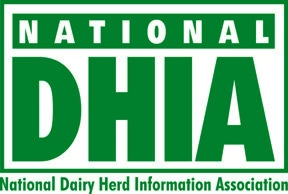Winter’s wrath is upon us, and dairy farmers are bracing for impact. From feed stockpiles to power backups, this guide covers essential strategies to keep your herd healthy and milk flowing when blizzards hit. Learn how to weather the storm and emerge stronger on the other side. Your farm’s survival guide is here.
As winter tightens its grip on the Northeast US and Canada, dairy farmers face another challenging season. During a significant snowstorm in the region, you might seek a brief break from facing the elements as you read this, possibly under generator light with a much-needed cup of coffee. If you are enduring the storm, you are well acquainted with howling winds, plummeting temperatures, and snowdrifts that appear to increase rapidly. Farmers are heavily bundled, trudging through deep snow to check on their herds, hoping the milking equipment holds up, and wondering when the next feed delivery will arrive. Others may be anxiously watching the forecast, mentally reviewing preparations, and hoping these measures are sufficient for when the storm arrives. All individuals face similar challenges irrespective of where they are located during this weather event. Let’s discuss strategies to keep our herds healthy, maintain milk production, and preserve our operations when Mother Nature is fiercest.
Preparation: The Key to Weathering the Storm
Feed and Bedding Stockpiles
Ensure you have 8-12 tons of silage or haylage per week for a 100-cow herd, depending on cow size and production level. For a 100-cow herd, that’s approximately 8-12 tons of silage or haylage per week, depending on cow size and production level. Dr. Sarah Johnson, Extension Dairy Specialist at Cornell University, advises:
“During severe weather, cows may need up to 10% more feed to maintain their body temperature. Plan your stockpile accordingly.”
Water System Integrity
Insulate pipes and consider installing heat tape to prevent freezing. The University of Nebraska-Lincoln Extension emphasizes the critical necessity of a backup water tank, as each lactating cow requires 30-40 gallons daily.
Structural Integrity

Inspect your barns thoroughly. The exact safe snow load can vary by building structure, but as a general guideline, consider removing snow from roofs if accumulation exceeds 4 inches of wet snow or 10 inches of dry snow to prevent collapse. Always consult a structural engineer for specific recommendations for your buildings.
Power Backup

Having a reliable generator is crucial during severe weather conditions. Ensure it can manage essential systems like milking equipment, water pumps, and minimal heating. The Penn State Extension recommends sizing your generator to hold 20-25% more than your estimated wattage needs.
Staff Preparedness
Develop a clear plan with your team for managing shifts during severe weather conditions. If necessary, include arrangements for on-farm accommodation to ensure staff readiness.
Managing During the Storm
Herd Comfort and Health
Provide ample dry bedding and shelter for animals. Monitor for signs of cold stress, such as shivering, huddling, or reduced activity. The University of Wisconsin-Madison Extension provides a comprehensive guide on recognizing and managing cold stress in cattle.
Maintain Routines
Stick to regular feeding and milking schedules as much as possible. Consistency is crucial for maintaining production.
Vigilant Monitoring
Keep a close eye on your herd’s health. If concerns arise, don’t hesitate to contact your veterinarian, even for a video consultation.
Access Management
Regularly clear critical pathways, including walkways, feeding areas, and access routes for emergency vehicles, to maintain operational efficiency.
Stay Informed
Keep communication devices charged and monitor local updates on road closures, power outages, and emergency services.
Feed Adjustments During Extreme Cold
| Temperature (°F) | Increase in Energy Requirements |
|---|---|
| 32 | 0% |
| 22 | 10% |
| 12 | 20% |
| 2 | 30% |
| -8 | 40% |
Source: National Research Council, Nutrient Requirements of Dairy Cattle, 2001.
Research from the University of Minnesota Extension indicates that cows require about 1% more energy in their feed for every degree Fahrenheit below 32°F (0°C). Key adjustments to consider:
- Increase the energy content of your Total Mixed Ration (TMR) to meet the cows’ energy requirements during extreme cold. Think about adding extra corn silage or incorporating bypass fat.
- Ensure cows have constant access to clean water to maintain dry matter intake. Research published in the Journal of Dairy Science shows that even a 10% drop in water consumption can lead to a 3% decrease in milk production.
- Monitor body condition scores closely and adjust rations to maintain optimal health and production.
Financial Management During Extended Storm Periods
- Emergency Fund: The USDA recommends having 3-6 months of operating expenses saved for emergencies.
- Insurance Review: Ensure your farm insurance covers damages caused by winter conditions. The USDA Risk Management Agency offers various insurance options for dairy operations.
- Government Assistance: Familiarize yourself with USDA disaster assistance programs, such as the Livestock Indemnity Program (LIP) and Emergency Assistance for Livestock, Honeybees, and Farm-Raised Fish Program (ELAP).
- Negotiate with Suppliers: While not guaranteed, some suppliers may be willing to discuss payment terms during challenging times. Always have these discussions well in advance of emergencies.
Managing Milk Storage During Road Closures
| Storage Temperature (°F) | Maximum Storage Time |
|---|---|
| 45 | 24 hours |
| 40 | 48 hours |
| 35 | 72 hours |
- Temperature Control: It is crucial to comply with FDA regulations, which require milk to be cooled to 45°F (7.2°C) or below within two hours after milking and kept at that temperature.
- Power Backup: Ensure your generator can run the cooling system continuously.
- Coordinate with Processors: Maintain close communication with your milk hauler and processor. Many milk haulers and processors have emergency plans for severe weather events.
- Last-Resort Options: If pickup is impossible, refer to the EPA guidelines for correct milk disposal. Always check with your local extension office for specific regulations in your area.
Leveraging Technology for Storm Management
- Automated Monitoring Systems: Research published in the Journal of Dairy Science in 2019 demonstrated that automated health monitoring systems can identify health issues up to four days earlier than traditional methods, highlighting their effectiveness.
- Remote Viewing: The University of Wisconsin-Madison Extension recommends installing cameras in key areas to reduce the need for physical checks in dangerous conditions.
- Smart Feeding Systems: A 2020 study in the Journal of Dairy Science found that automated feeding systems can improve feed efficiency by up to 6% and milk yield by up to 2%, though results may vary by farm.
- Weather Stations: On-farm weather stations can provide crucial data for decision-making. The National Weather Service, a reputable source, offers guidelines for setting up personal weather stations.
While technology can aid in farm management, it should complement rather than replace critical thinking and hands-on supervision for effective decision-making. Always have a low-tech backup plan.
Regional Considerations
Northern New England and Eastern Canada
According to Dr. Emily White, a meteorologist at the National Weather Service, farmers in this region should prepare for increased frequency and intensity of nor’easters. Investing in robust snow removal equipment and wind-blocking structures around barns is recommended.
Mid-Atlantic Region
Tom Brown, Emergency Management Coordinator for Lancaster County, PA, highlights this area’s significant threat of ice storms. Prepare by stocking up on sand or sawdust for traction, and be ready for quick freeze-thaw cycles that may harm structures.
Great Lakes Area
Dr. White warns that lake effect snow can rapidly deposit feet of snow within hours. Farmers in this area should establish a strategy for swift snow removal and reinforce barn roofs to manage heavy loads effectively.
Post-Storm Recovery
- Assess damage systematically: Check structures, equipment, and livestock for any issues.
- Document everything: Take photos and keep detailed records for insurance.
- Contact your local farm service agency for potential disaster assistance programs.
- Review and revise: Use the experience to improve your emergency plan for future events.
In conclusion, weathering winter storms requires preparation, adaptability, and resilience—qualities that dairy farmers have in abundance. Implementing these strategies will enhance your ability to safeguard your herd, sustain production, and strengthen your operations for future success. Stay safe out there, and may your barns stand firm and your milk tanks stay full!
Key Takeaways:
- Stockpile at least two weeks’ worth of feed and bedding to ensure adequate supply during snowstorms.
- Insulate water pipes and consider heat tapes or backup water tanks to maintain consistent water access.
- Regularly inspect barn roofs for snow accumulation and ensure structural integrity to prevent collapse.
- Invest in generators to sustain critical operations during power outages.
- Develop a storm management plan with staff to maintain operations and safety during severe weather.
- Provide adequate shelter and bedding for cows, maintaining regular feeding and milking routines.
- Constantly monitor herd health for signs of cold stress and act promptly to mitigate risks.
- Clear essential pathways and access points on the farm promptly to ensure operational efficiency.
- Encourage communication and real-time updates on weather conditions and farm operations.
- Plan feed adjustments to meet increased energy needs of livestock during periods of extreme cold.
- Evaluate farm financial strategies, including insurance and emergency funds, to manage financial impacts of prolonged storms.
- Enhance milk storage capacity and develop contingency plans for milk transportation during road blockages.
- Use technology and online networks to share information and manage resources effectively during storms.
- Understand regional-specific weather impacts and prepare accordingly to mitigate localized risks.
- Implement post-storm recovery plans to quickly restore normal farm operations and assess potential damage.
Summary:
This guide gives dairy farmers in the Northeast US and Canada tips to handle blizzards. It shares steps to prepare for storms, like stocking up on feed and checking water systems and buildings. It also talks about keeping cows healthy and managing the farm during a storm, such as adjusting feed and watching finances. The guide covers milk storage problems if roads are closed and suggests using technology and regional advice to handle storms better. After the storm, it gives recovery tips and highlights the importance of preparation and teamwork to stay strong through winter’s toughest weather.
Learn more:
- Why 80% of U.S. Dairy Farms Are Struggling: An Insider’s Look at the Unseen Challenges
- Bird Flu Hits Michigan Dairy Herd—Farmers Brace for Impact
- Navigating the Waves: Dairy Producers Defy Challenges to Keep Barns Full Amid Soaring Milk Prices and Adverse Conditions
 Join the Revolution!
Join the Revolution!
Bullvine Daily is your essential e-zine for staying ahead in the dairy industry. With over 30,000 subscribers, we bring you the week’s top news, helping you manage tasks efficiently. Stay informed about milk production, tech adoption, and more, so you can concentrate on your dairy operations.







 Join the Revolution!
Join the Revolution!







